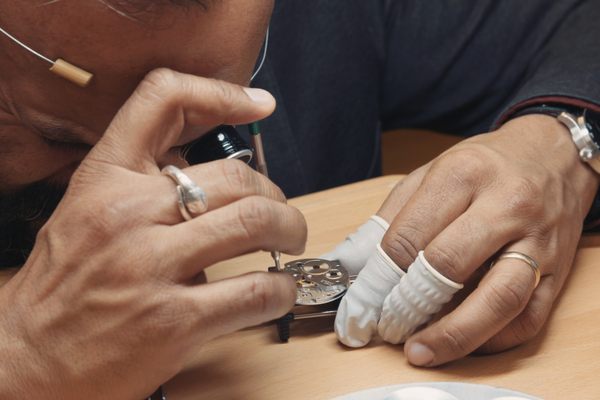One of NYC’s Last Clock Towers Has Its Future Decided This Week
 Inside the clock tower at 346 Broadway (all photographs by Allison Meier/Atlas Obscura)
Inside the clock tower at 346 Broadway (all photographs by Allison Meier/Atlas Obscura)
A clock tower that survived over a century in the tumultuous terrain of New York City is in limbo as its landmarked home goes private.
The Clock Tower Building, formerly the New York Life Insurance headquarters, at 346 Broadway (or 108 Leonard Street, depending on the entrance) in Tribeca was sold by the City of New York last year. Now the Peebles Corporation and Elad Group intend to transform the 19th-century building into luxury condos. For years, the totally mechanical clock tower has been regularly wound by New York’s Clock Master Marvin Schneider with fellow retired city worker Forest Markowitz (the two are shown below). In the 1980s, Schneider, then a novice at clockworks, voluntarily restored the mechanism with coworker Eric Reiner on their lunch breaks.
 Tomorrow, the future of their weekly winding ritual may be decided. As David W. Dunlap wrote last week for the New York Times: ”How much longer either of them will be involved is a mystery that may be cleared up Nov. 18, when the project arrives at the landmarks commission for a hearing.”
Tomorrow, the future of their weekly winding ritual may be decided. As David W. Dunlap wrote last week for the New York Times: ”How much longer either of them will be involved is a mystery that may be cleared up Nov. 18, when the project arrives at the landmarks commission for a hearing.”
Last December, the Atlas Obscura team met up with Schneider and Markowitz (having previously met them in Flushing, Queens, to explore a clock tower on the U-Haul building that is undergoing restoration) to attend one of these morning windings. By then, the Clocktower Gallery that had been in residence on the floor below the clock was gone, leaving the long hallway to the winding staircase ghostly and empty. Yet, where the space below was a void, awaiting its future presumably as a penthouse, the smaller clock tower above was as animated as it was over a century ago when it was first installed. In a small wood structure in the center of the room, frosted 12-foot clock faces on four sides with the giant ticking hands and Roman numerals outside in silhouette, the duo used a massive crank to raise the 1,000-pound weight that then descends over the following week to power the machine. The 5,000-pound bell hanging above no longer tolls, but we climbed up a metal ladder and looked up into its broad, metal maw; it was like connecting directly with the city’s history, distilled into a single moment.
Since 1928 the building had been used by the city for things like the Summons Court, yet it still managed to maintain much of its old world magnificence. Constructed by the architecture firm McKim, Mead & White, the firm took over a design by Stephen Decatur Hatch and gave the 270 feet of the building an Italian Renaissance Revival glamor, right up to the stone eagles gazing down at the streets from the highest balcony. The clock tower was added during construction in 1897, built and installed by E. Howard Watch and Clock Company.
It’s rare for one of these clocks to still be in its original space, complete with its winding mechanism, even rarer to still be operating. (For example, the Jefferson Market Library clock in Manhattan, like many others in the city, is now electric.) Back in the 1980s when Schneider worked on its restoration, it had been dormant for around 20 years. As Schneider explained to the Tribeca Trib last month, to go there now “is to see a piece of history working in its original place and a tribute to American technology.”
Below are more photographs from inside the Clock Tower Building. While there may be some changes to how the clock continues to tick into the coming years, the work that Schneider and Markowitz have done to keep it operating, marking steady time through the fast paced mania of New York development, has at least assured it can’t be ignored in the building’s transformation.






The bell for the clock tower



Tower clock oil


 One of the original gears
One of the original gears


View from the balcony outside the clock tower

Looking over the balcony outside the clock tower



Exterior of the clock tower

One of the clock tower eagles covered

View from the staircase up to the clock tower
Click here to see a video of the clock tower in action on the Atlas Obscura Instagram.








Follow us on Twitter to get the latest on the world's hidden wonders.
Like us on Facebook to get the latest on the world's hidden wonders.
Follow us on Twitter Like us on Facebook